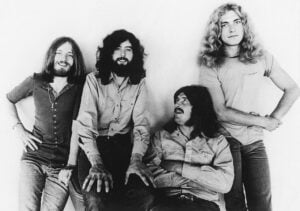5 Classic Rock Albums Where Every Song Flopped

via Rafael Romero / YouTube
In the music world, classic rock holds a special place with its timeless tracks and legendary artists. However, not all albums released under this genre were hits. Some, despite being crafted by renowned artists, didn’t resonate with their audience as expected. In this list, we explore five classic rock albums where, surprisingly, every song missed the mark. These albums show that even the most successful musicians can have their off moments. The reasons for their failure vary, but their stories are equally interesting, providing insights into the unpredictable nature of music popularity.
1. Lou Reed – Metal Machine Music (1975)
Lou Reed’s “Metal Machine Music” is an album that certainly broke the mold, but not in the way fans hoped. Instead of the thoughtful lyrics and charismatic guitar work Reed was known for, this album was a foray into the world of avant-garde noise. Over four sides of vinyl, listeners were treated to an unrelenting barrage of feedback and distorted sounds. It was a bold move, especially coming from someone celebrated for his narrative songwriting. Critics were baffled and fans were alienated, making it a commercial flop. The album has since gained a cult status, but it remains a head-scratching anomaly in Reed’s discography, illustrating a bewildering side of experimentation.
2. The Rolling Stones – Dirty Work (1986)
Entering the mid-80s, The Rolling Stones released “Dirty Work”, an album mired by internal tensions and outside pressures. This period saw the band members struggling with personal issues and conflicts within the group, which ultimately reflected in the music they produced. The album attempted to blend the Stones’ iconic rock sound with the then-popular genres of dance and reggae. However, the result felt disjointed and failed to capture the band’s usual charismatic energy. It’s seen as one of their weakest efforts, with both fans and critics agreeing that it lacked the infectious hooks and compelling lyrics of their former masterpieces.
3. KISS – Music from “The Elder” (1981)
KISS attempted a bold move with their 1981 concept album “Music from ‘The Elder'”. The band was known for their fire-breathing, blood-spitting, hard rock personas but they took a sharp turn trying to craft a narrative concept album. Unfortunately, the album’s story was confusing, and the music deviated significantly from the hard rock and heavy metal that had defined their success. Fans and critics alike were puzzled, leading to “The Elder” becoming a rare commercial misstep in the band’s otherwise successful career. The attempt at a more artful, theatrical presentation missed the mark, leaving many songs from the album unheard and unappreciated by the broader audience.
4. Neil Young – Landing on Water (1986)
Neil Young’s venture into the 1980s was marked by “Landing on Water,” an album that veered dramatically from his signature sound. Young experimented with electronic instruments and production techniques, resulting in a sound that was both jarring to his long-time fans and unappealing to newer audiences. The songs, filled with synthesizers and heavy production, lacked the raw emotiveness and storytelling prowess that Young was known for. Despite his reputation as a musical innovator, this attempt at reinvention didn’t resonate, showing that not all experiments lead to success. “Landing on Water” stands as a curious, often overlooked episode in Young’s journey through music.
5. Van Morrison – Common One (1980)
Van Morrison’s “Common One” was a departure from the accessible, soulful rock that had brought him fame. The album featured lengthy tracks with improvisational jazz influences, dense lyrical content, and a spiritual undertone, which, although artistically ambitious, failed to connect with a broader audience. Critics found it indulgent and lacking the catchy, heart-warming melodies of his previous work. Over time, “Common One” has been reassessed by some as a misunderstood masterpiece, but upon release, it was considered a commercial failure, underscoring the risk artists take when diverging significantly from their established styles. It showcases Morrison’s willingness to explore new territories, even at the cost of immediate success.












